Policymakers have divergent views on many trade issues. But the goal of bringing more people to trade is broadly shared. The reason is clear: trade offers a path to prosperity. Making trade faster, easier and less costly can help.
The Trade Facilitation Agreement (TFA) entered into force on 22 February 2017 and applies to the WTO members that have accepted it (WTO members TFA list).
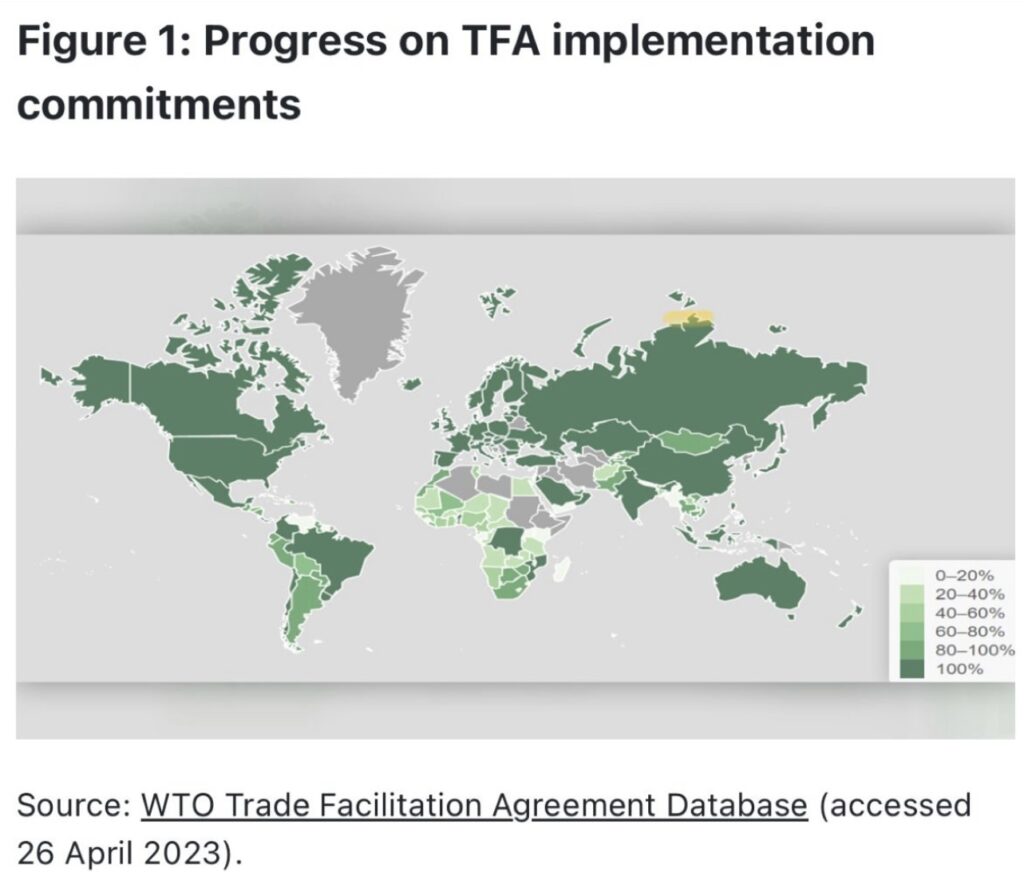
Read Anabel González, Deputy Director Generalmof the World Trade Organization (WTO) latest blog on what next on trade facilitation to make trade more inclusive. Read it here: Blog
India climbed up six places in the World Bank’s Logistic Performance Index 2023, as investments in soft and hard infrastructure as well as technology helped the country improve its port performance.
India is now ranked 38 in the 139 countries index, up from 44 in 2018.
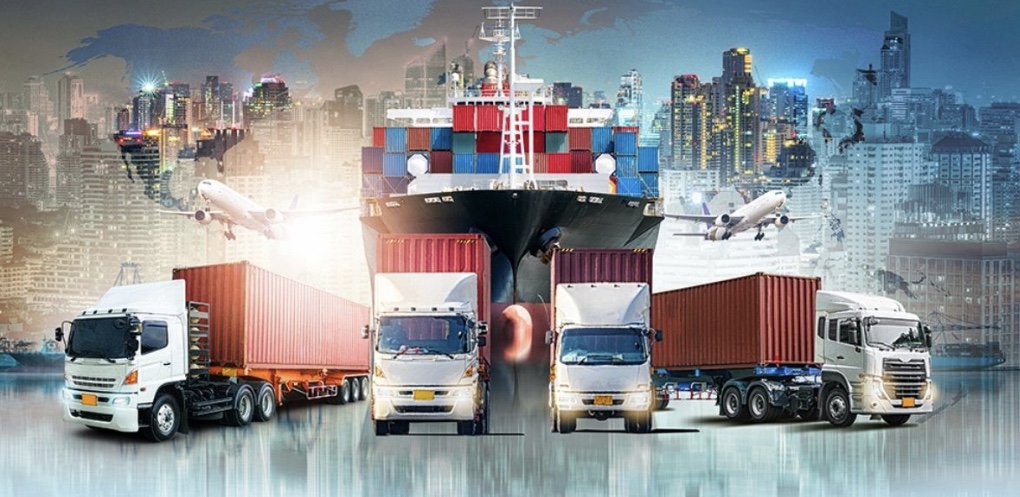
The 2018 report ranked each country separately. “The government of India has invested in trade-related soft and hard infrastructure connecting port gateways on both coasts to the economic poles in the hinterland,” the report said.
While India’s rank slipped in customs performance to 47 from 40 in 2018, it moved five places in infrastructure to 47 from 52.
It was ranked 22 for international shipments in 2023 from 44 in 2018 and moved four places up to 48 in logistics competence and equality. In timelines, the country witnessed a 17 place jump in rankings, whereas it moved three places in rank in tracking and tracing to 38.
Modernisation and digitalisation was quoted as a reason for emerging economies, like India, to leapfrog advanced countries, according to the report.
The average dwell time for containers between May and October 2022 was three days for India and Singapore, much better than some of the industrialised countries, according to the report. The dwell time for the US was seven days and for Germany was 10 days.
“End-to-end supply chain digitalisation, especially in emerging economies, is allowing countries to shorten port delays by up to 70% compared to those in developed countries,” the release said.
“Moreover, demand for green logistics is rising, with 75% of shippers looking for environmentally friendly options when exporting to high income countries,” it added.
“While most time is spent in shipping, the biggest delays occur at seaports, airports, and multimodal facilities. Policies targeting these facilities can help improve reliability,” said Christina Wiederer, senior economist, World Bank’s Macroeconomics, Trade & Investment Global Practice.
Source:MaritimeGateway
Papua New Guinea is the most linguistically diverse country in the world, with approximately 840 languages used.
Around 40% of the world’s languages are at risk of dying out, as some languages become less widespread with each new generation.
Organizations such as the United Nations are takings steps to continue these languages.
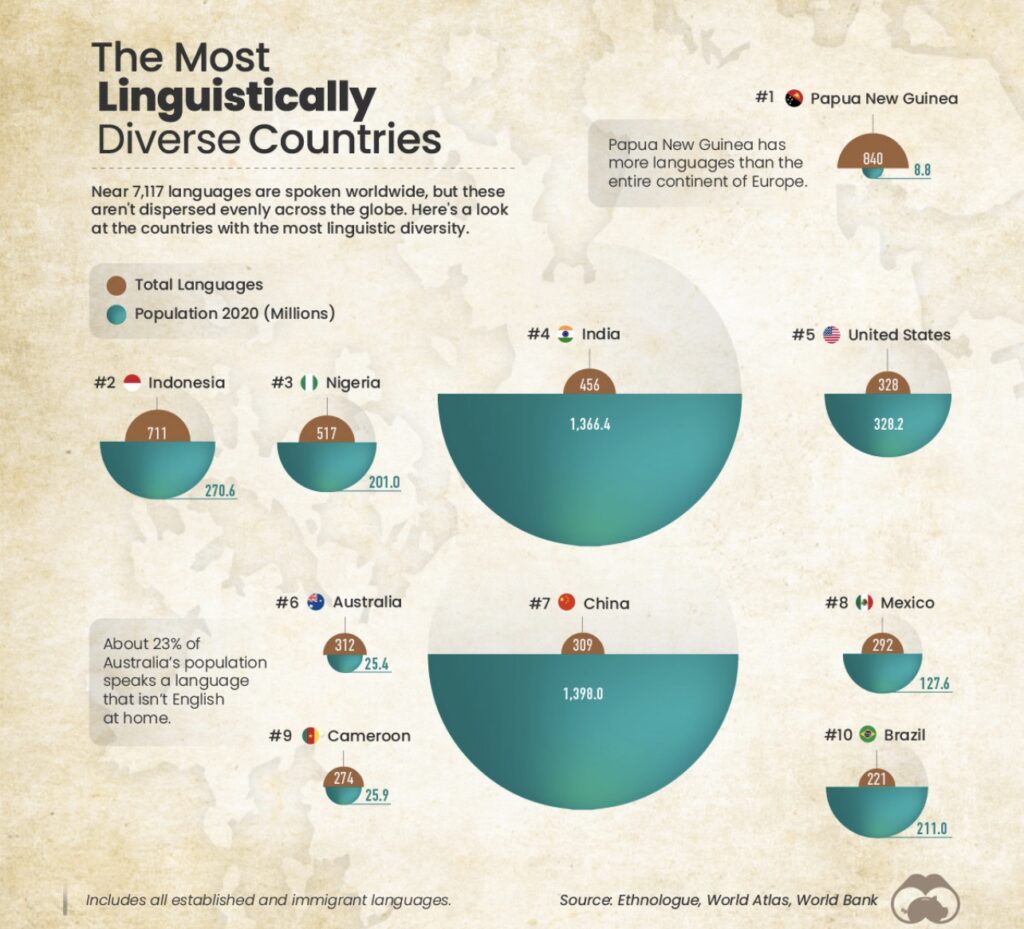
Thousands of languages are spoken worldwide, but only a fraction are used widely. In fact, the speakers of 23 langauages account for more than half of the total global population.
Despite this, there are still pockets around the globe that are rich in linguistic diversity. Here’s a look at the top 10 countries where the most languages are spoken.
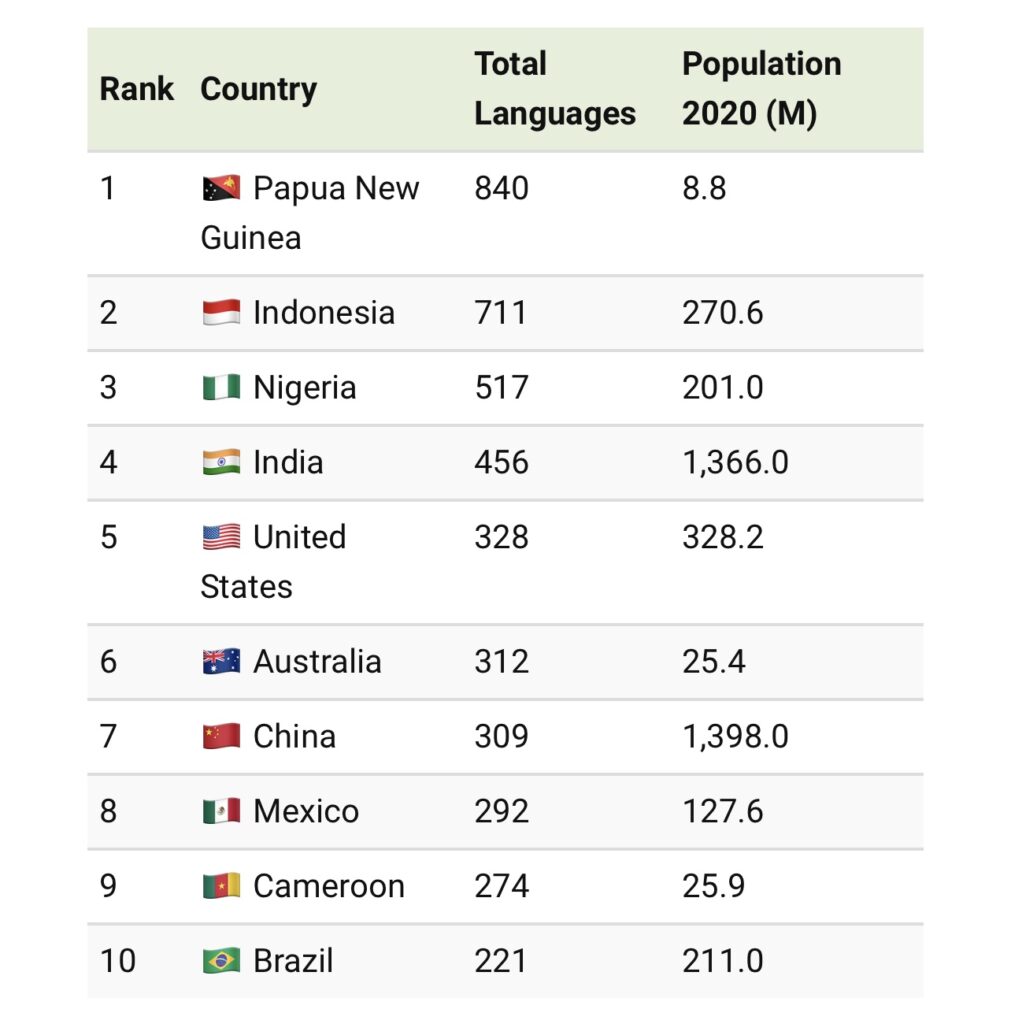
These numbers include established and immigrant dialects.
Despite a population of just 8.8 million, Papua New Guinea comes in first with a total of 840 languages spoken across the country. To put things into perspective, that’s almost 12% of the world’s languages spoken in an area that’s roughly the size of California.
Second on the list is Indonesia, with 711 different languages used throughout the country. Like Papua New Guinea, a major factor that could explain its language diversity is its geography—Indonesia is made up of around 17 500 islands (although more than 7,000 of them are uninhabited).
You can read the entire article here: Langauages
Source:WEF
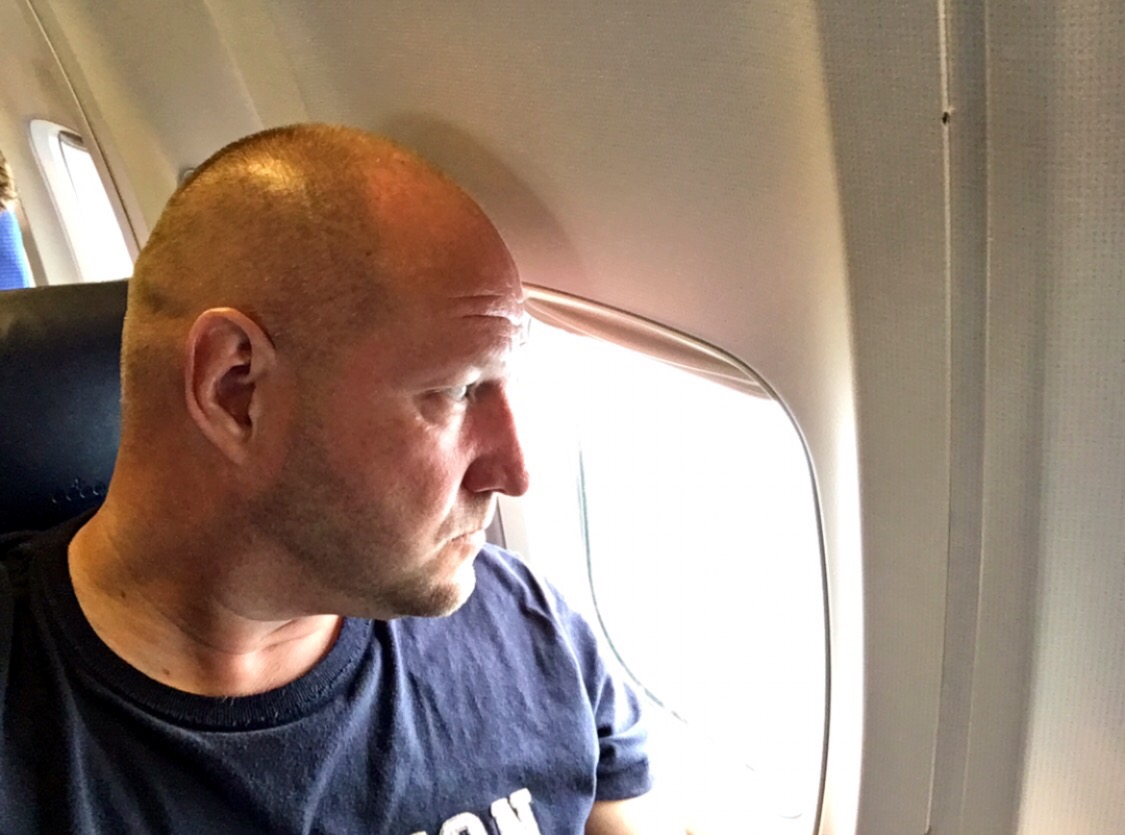
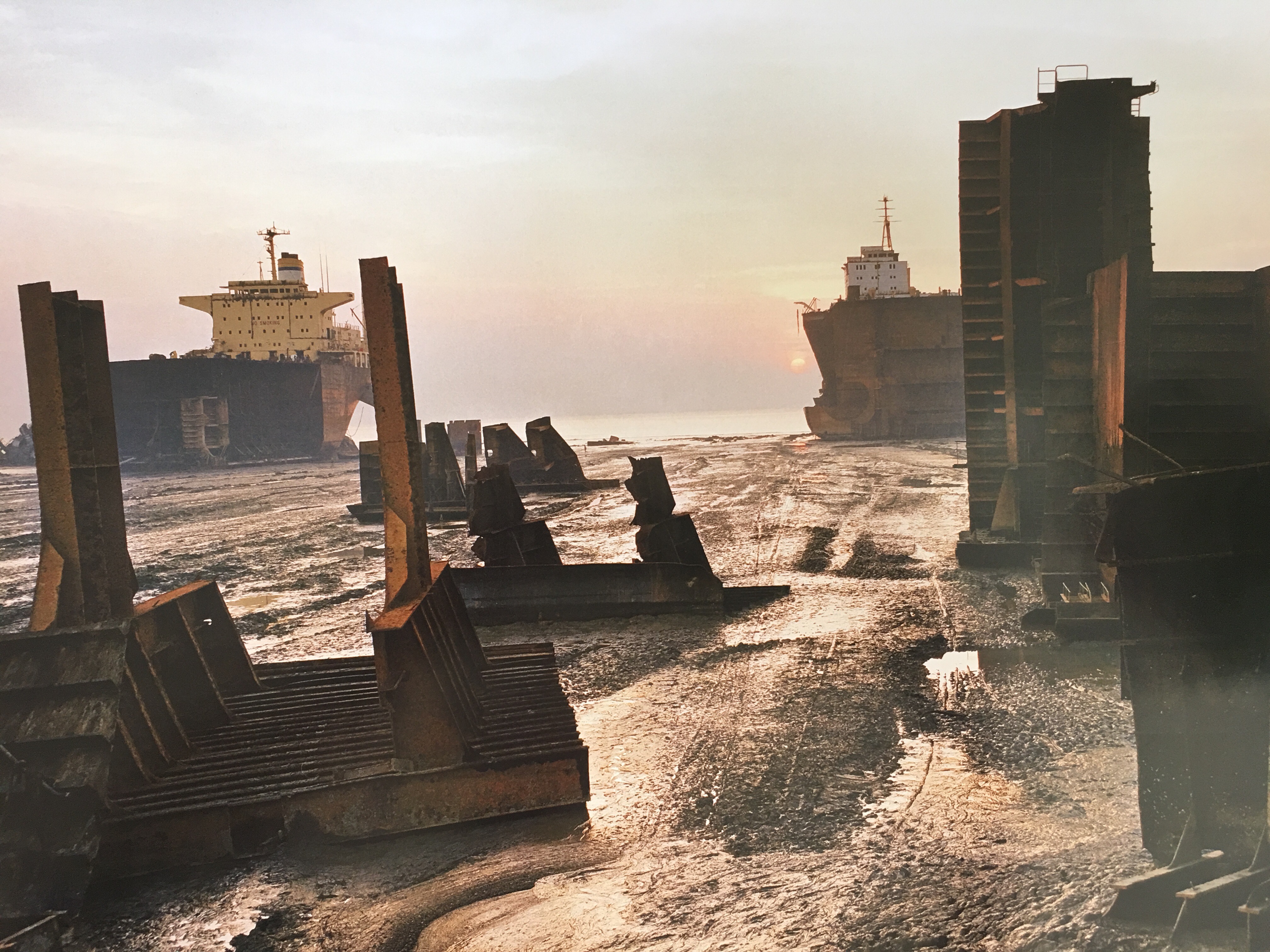
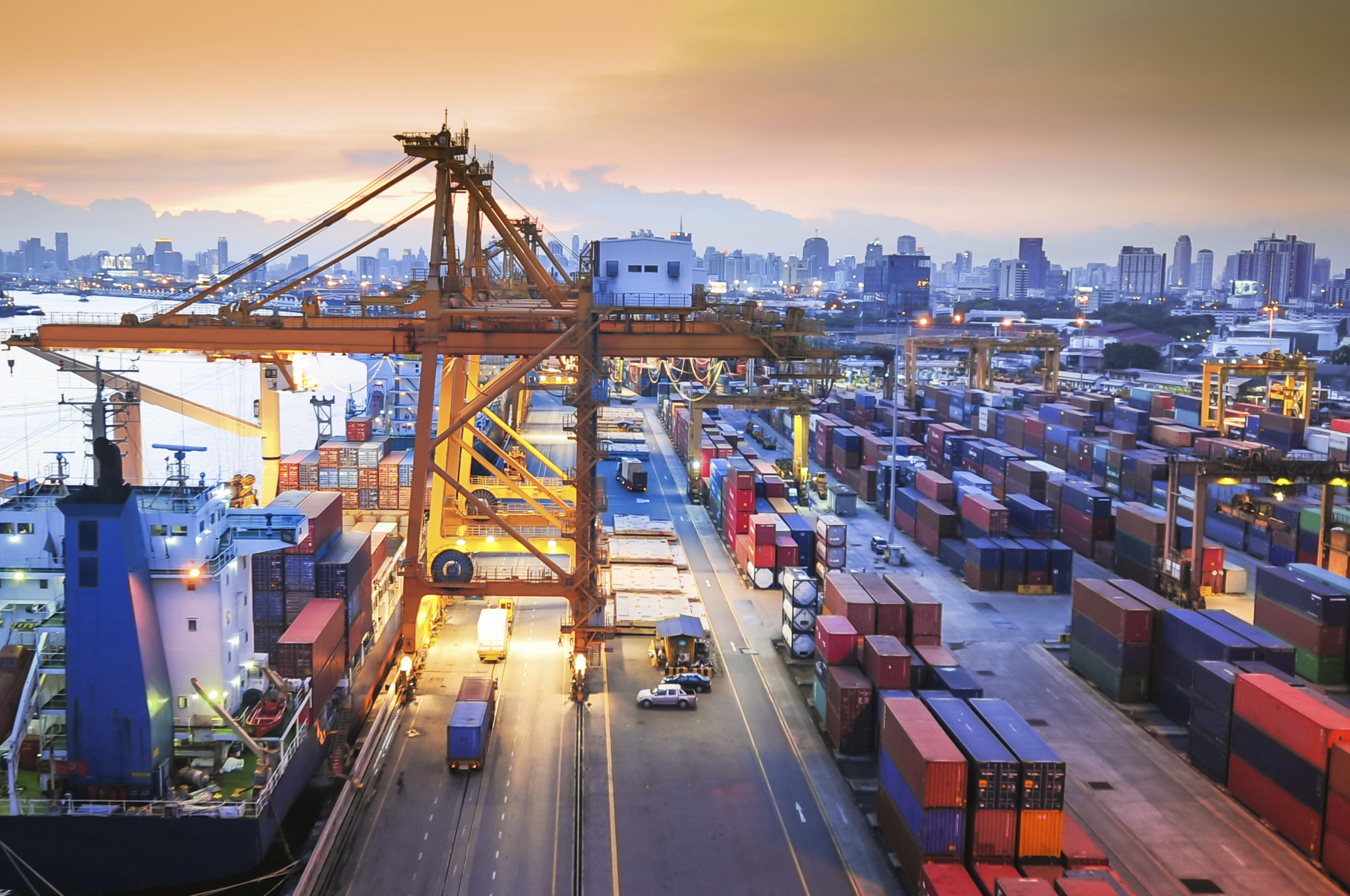

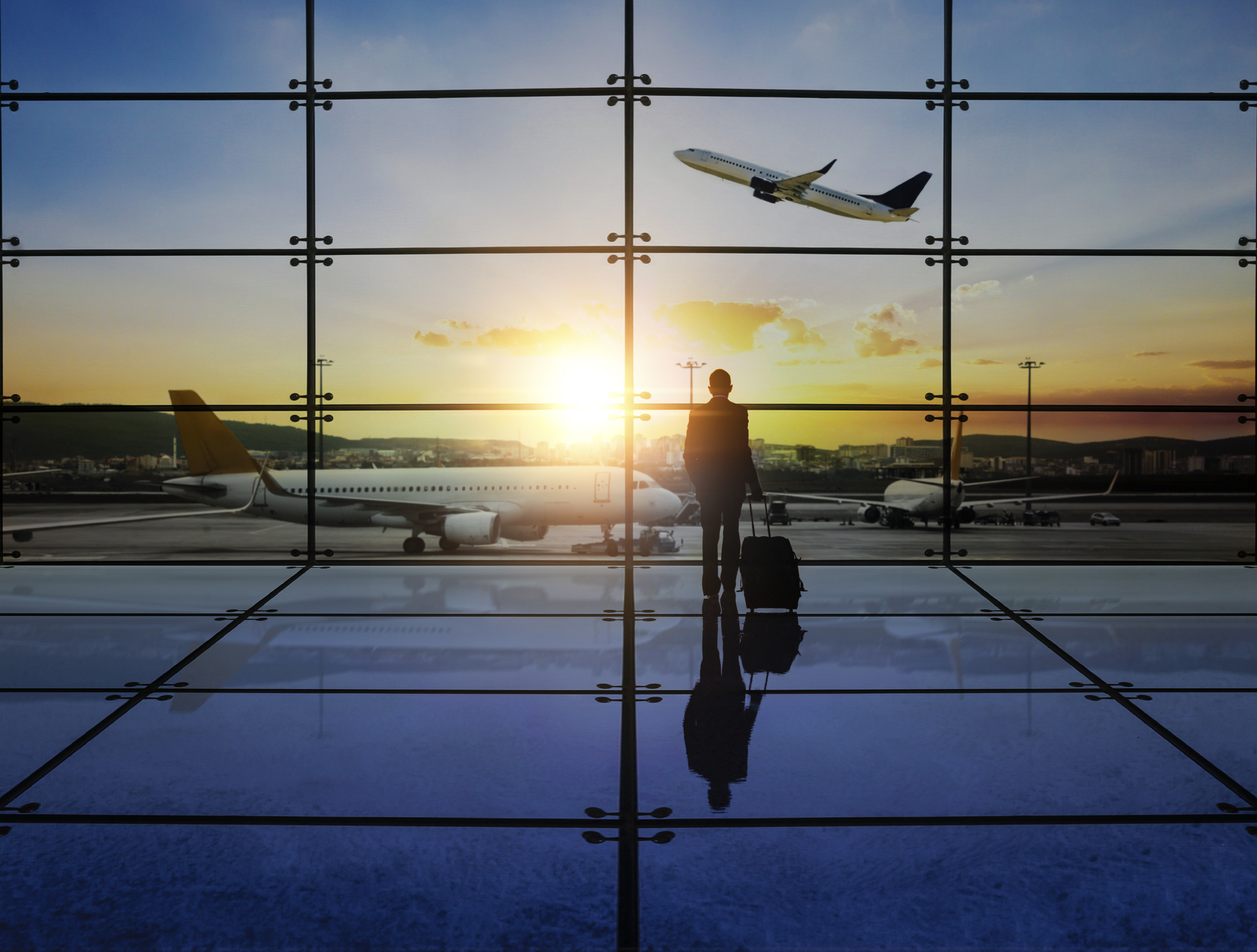
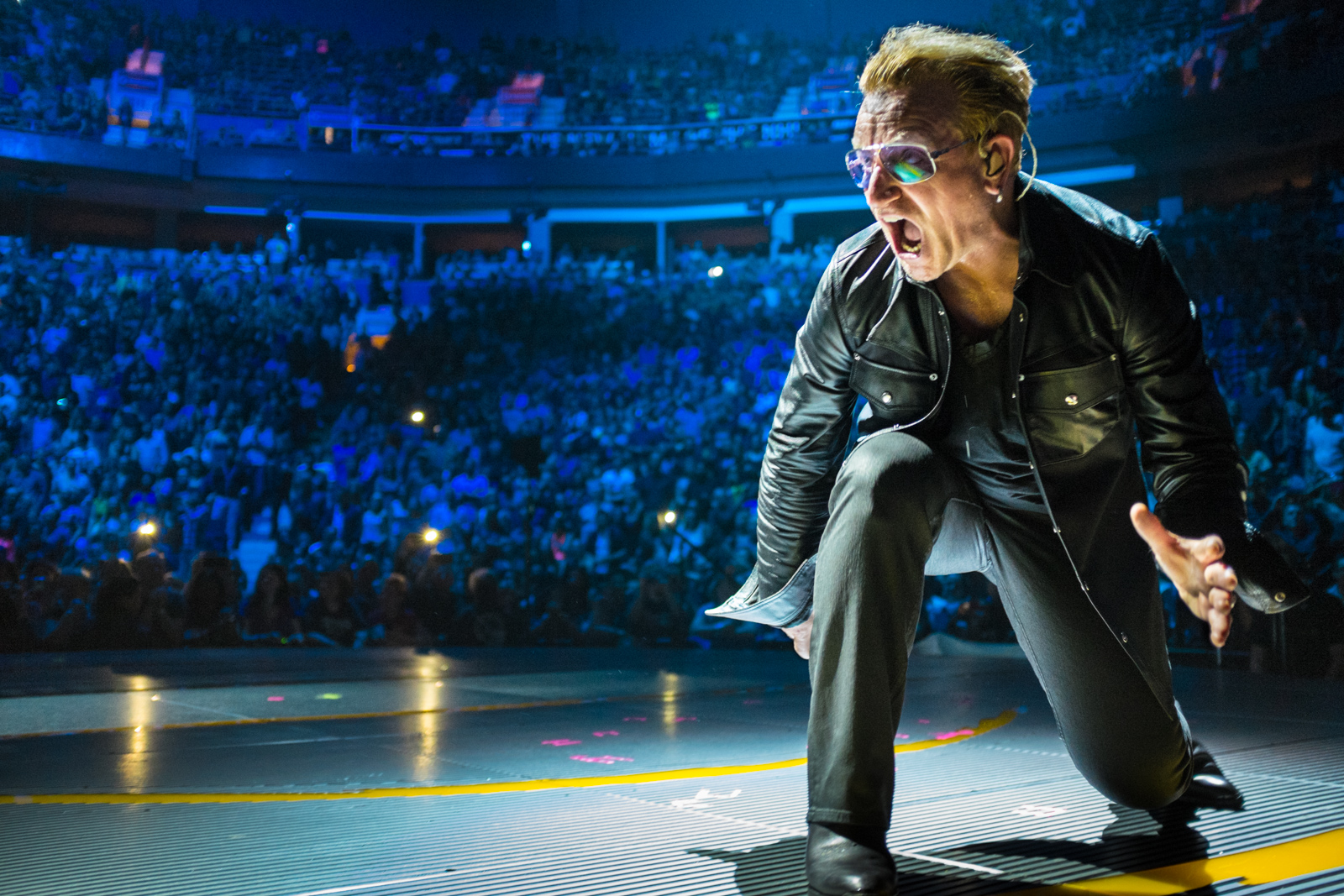
You must be logged in to post a comment.